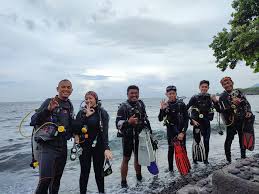Diving at a professional level is not only a test of skill but also one of physical resilience. Whether it’s springboard diving or the graceful yet demanding platform dives, the sport pushes the body to its limits making injury prevention crucial. To avoid harm while performing dives that require explosive power, flexibility, and precision, high-level divers undergo meticulous training programs. Here’s a closer look at how they train their bodies to stay injury-free.
1. Core Strength: The Foundation of a Divers’ Power
A diver’s body must function as a single, fluid unit to maintain balance and control in the air. The core—the muscles around the abdomen, lower back, and pelvis—is the foundation for almost everything divers do. Strong core muscles help stabilize the body during takeoff, maintain position during flight, and ensure a clean entry into the water.
To build core strength, divers incorporate a mix of planks, leg raises, and rotational movements into their routines. Pilates and yoga are also highly favored by divers to improve both strength and flexibility in the core. Without a well-developed core, even a minor imbalance could lead to misalignments, increasing the risk of injury.
2. Flexibility: The Key to Proper Form
Diving requires athletes to achieve a wide range of motions, from tight tuck positions to graceful, extended forms. Flexibility is not just about looking good mid-air; it’s about ensuring proper alignment during dives, reducing the chances of overstretching or straining muscles.
Diving-specific flexibility training focuses on the hamstrings, lower back, shoulders, and ankles—the areas most susceptible to strain during intense dives. Stretching routines often combine dynamic stretches to prepare muscles for movement and static stretches for long-term flexibility gains. Additionally, yoga poses that target hip openers and spinal flexibility are common in a diver’s training regimen.
3. Joint Stability and Control: Protecting the Ankles, Knees, and Shoulders
High-level divers rely heavily on their joints to manage the forces they experience during takeoff, mid-air rotations, and water entry. Without proper joint stability, the impact of landing in the water or making sharp, powerful movements in mid-air can result in injuries.
Training for joint stability often involves exercises that focus on ankle, knee, and shoulder stabilization. Resistance bands and balance boards help improve proprioception (the sense of body position) and strengthen smaller stabilizing muscles around key joints. For example, exercises like single-leg squats or ankle hops build strength in the legs while promoting better knee and ankle control.
The shoulders, often under significant strain during the approach and rotation phases of a dive, are particularly vulnerable. Divers incorporate exercises like rotator cuff strengthening and scapular stabilization exercises to keep their shoulders healthy and strong.
4. Plyometrics and Explosive Training: Power with Precision
Diving involves quick, explosive movements, particularly during the launch off the platform or springboard. Plyometric training helps divers build the necessary explosive power to achieve height and speed without compromising control.
Exercises such as box jumps, broad jumps, and depth jumps mimic the explosive nature of diving take-offs. These exercises not only improve power but also enhance a diver’s ability to land with precision in the water, reducing the risk of joint impact injuries.
Plyometrics also condition the muscles to react quickly to sudden shifts in movement, which is crucial for high-level diving where split-second adjustments can make all the difference in landing successfully.
5. Recovery and Injury Prevention: Rest, Nutrition, and Rehab
Injury prevention goes beyond training—it includes proper recovery. High-level divers follow strict recovery protocols to ensure their bodies heal and regenerate. This includes:
- Active recovery like swimming, light stretching, or cycling, which keeps blood flowing to muscles without overloading the body.
- Regular massage therapy or myofascial release techniques to relieve muscle tension and prevent tightness, particularly in the shoulders and legs.
- Ice baths and contrast baths (alternating hot and cold) to reduce inflammation and promote muscle recovery.
In addition to physical recovery, nutrition plays a vital role. Divers focus on a diet rich in protein, healthy fats, and carbohydrates to fuel muscle repair and maintain energy levels. They also incorporate anti-inflammatory foods such as turmeric and omega-3-rich sources to aid recovery and reduce muscle soreness.
6. Mental Training: Focusing on Safety and Confidence
A significant portion of injury prevention lies in a diver’s mental approach. High-level divers face pressure, stress, and fear especially when performing complex dives from great heights. Mental training techniques such as visualization, mindfulness, and meditation help athletes stay focused, reduce anxiety, and improve confidence.
By rehearsing their dives mentally before executing them, divers can anticipate every motion and avoid overthinking in high-pressure moments. Feeling mentally confident can prevent rushed movements or hesitation, both of which can lead to accidents.
7. Cross-Training: Diversifying Physical Capabilities
In addition to sport-specific training, divers engage in cross-training activities that enhance their overall athleticism. Swimming, for example, is a natural complement to diving, as it builds cardiovascular endurance, enhances muscle coordination, and helps prevent injury by working the entire body.
Other cross-training activities like gymnastics, dance, and track and field help divers improve their agility, coordination, and body awareness, essential elements for executing complex aerial rotations safely.
A Holistic Approach to Injury Prevention
Injury prevention for high-level divers is a multifaceted effort, involving strength, flexibility, joint stability, recovery, and mental focus. The combination of these elements ensures that divers not only perform at their best but also protect their bodies from the demanding forces of the sport.
By training their bodies through these various methods and giving attention to recovery, divers can continue to push the boundaries of their sport while staying safe, injury-free, and at the top of their game.

